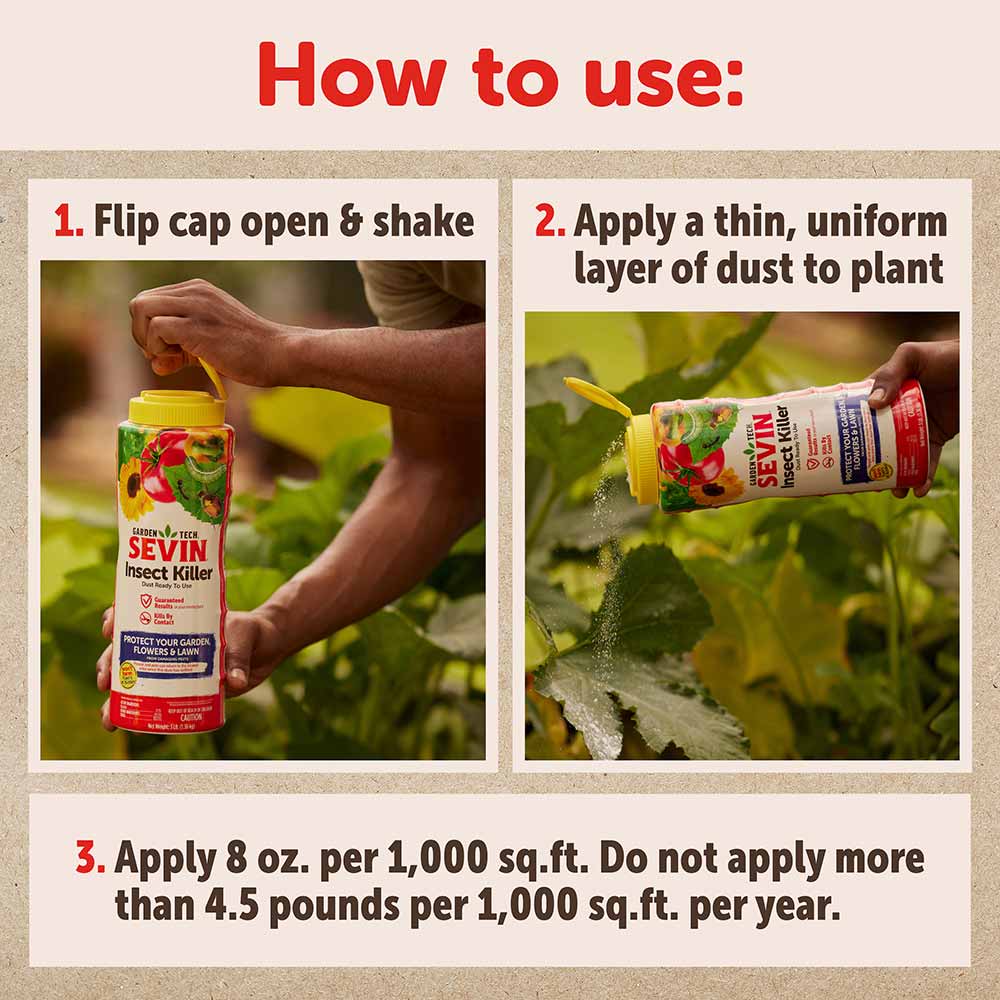
To use Sevin Dust on a vegetable garden, follow the instructions on the product label for the specific vegetable and pest you are targeting. Applying the dust evenly and avoiding contact with edible parts of the plants is important for effective and safe use.
Contents showSevin Dust is a popular insecticide that gardeners often use to control pests in their vegetable gardens. It is effective against a wide range of common garden pests such as aphids, beetles, caterpillars, and mites. However, to ensure the best results and minimize any potential harm to the plants and the environment, it is crucial to use Sevin Dust correctly.
This article will guide you on how to use Sevin Dust safely and effectively on your vegetable garden. Following the instructions on the product label, applying the dust evenly, and avoiding contact with the edible parts of the plants are all fundamental steps for successful pest control. By understanding how to use Sevin Dust properly, you can protect your vegetable garden and promote healthy, thriving plants.
Sevin Dust is a popular insecticide that is commonly used in vegetable gardens to control various pests. It contains the active ingredient known as carbaryl, which effectively targets and eliminates a wide range of garden pests. Sevin Dust comes in a fine powder form that can be easily applied to plants, providing a convenient and effective solution for gardeners.
Sevin Dust is a broad-spectrum insecticide that acts on contact with pests, working by disrupting their nervous systems. It effectively targets and controls a variety of insects, including aphids, beetles, caterpillars, leafhoppers, and many more. This makes it an excellent choice for vegetable gardeners who want to protect their plants from damage caused by these pesky pests.
There are several benefits to using Sevin Dust in your vegetable garden:
While Sevin Dust is an effective insecticide, it is important to handle it with care and follow safety measures to ensure the well-being of yourself, your plants, and the environment. Consider the following precautions:
By understanding the overview, benefits, and safety measures associated with Sevin Dust, you can effectively use this insecticide to protect your vegetable garden from pesky pests and ensure healthy, thriving plants.

When it comes to protecting your vegetable garden from pests and problems, Sevin Dust can be a powerful solution. However, before you reach for the dust, it’s important to prepare your garden properly to ensure its effectiveness. In this article, we will walk you through the essential steps to follow when getting your vegetable garden ready for Sevin Dust application. By identifying pests and problems, cleaning and clearing the garden, and timing the application correctly, you can achieve the best results for your beloved vegetables. Let’s dive in!
Before applying Sevin Dust to your vegetable garden, it’s crucial to identify any existing pests or problems that may be lurking among your plants. This step will help you target the specific pests and treat them accordingly. Keep an eye out for signs of insect damage, such as holes in leaves, discolored foliage, or chewed fruits. Additionally, look for evidence of common garden problems like fungal diseases or aphid infestations. Once you have identified the pests and problems, you can move on to the next step of preparing your garden.
Cleaning and clearing your vegetable garden is an essential part of the preparation process. Begin by removing any debris, fallen leaves, or dead plant material from the garden. These can provide hiding places for pests and pathogens, hindering the effectiveness of Sevin Dust. Rake the soil to loosen it, allowing better penetration of the insecticide. Make sure to pull any weeds or unwanted plants, as they can compete with your vegetables for nutrients and water. By creating a clean and tidy environment, you reduce the chances of pests infesting your garden.
Timing is everything when it comes to applying Sevin Dust to your vegetable garden. It’s important to choose the optimal moment for the application to maximize its efficiency. Typically, you should apply Sevin Dust in the early morning or late afternoon, when bees and other beneficial insects are less active. Be sure to check the weather forecast, as you want to avoid applying the dust right before heavy rains or strong winds. This will prevent the insecticide from being washed away or blown off the plants. By timing the application correctly, you can ensure that the Sevin Dust has enough time to work its magic before any potential rain showers or unfavorable weather conditions.
See also How to Apply Sevin Dust to Yard: The Ultimate Guide for Pest-Free Landscapes

Yes, Sevin Dust can be used in a vegetable garden to control pests like aphids, beetles, and caterpillars. However, it’s important to follow the instructions on the product label and avoid using it on edible parts of the plants. Always wash the vegetables thoroughly before consuming them.
The frequency of applying Sevin Dust in your vegetable garden depends on the severity of the pest problem. It’s recommended to monitor your plants regularly and apply the dust as soon as you notice pests. However, do not exceed the maximum number of applications specified on the product label.
Sevin Dust can be harmful if ingested by humans. It contains chemicals that can cause adverse health effects. Therefore, it’s essential to keep children and pets away from the treated area. In case of accidental consumption, seek medical attention immediately and provide the necessary information about the product used.
To sum up, using Sevin Dust on your vegetable garden can be an effective way to control pests and protect your plants. As we have discussed throughout this blog post, it is crucial to follow the instructions carefully and use it sparingly to avoid any potential harm to yourself, your plants, or the environment.
By taking the necessary precautions and incorporating Sevin Dust into your gardening routine, you can enjoy a thriving and healthy vegetable garden all season long.
Share on Facebook![]()
Follow us